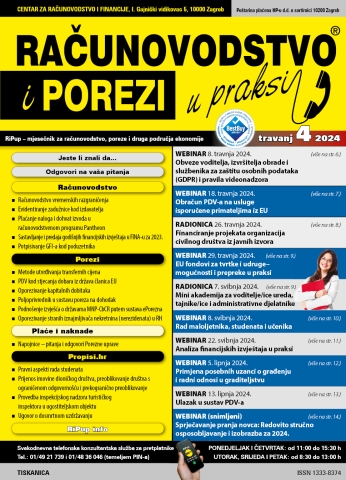Potential Economic Consequences of a Pandemic
At the time of this writing seasonal flu is spreading through much of the world. The current flu vaccine is approximately 30% effective. Ever since the H1N1 outbreak in 2007 that was declared a pandemic by a reactive World Health Organization (WHO); WHO and Centers for Disease Control (CDC) have been reluctant to move too quickly in declaring an outbreak, whether influenza, Ebola, Norovirus, Adenovirus or any of the myriad of potential pandemic causing viruses a pandemic.
Perhaps once burned, twice shy? The concern, however, should be on assessing our preparedness to deal with a large-scale outbreak. Since the threat of H5N1 (Bird flu) in the mid-2000’s pandemic planning has gone into hibernation for most organizations.
Far Greater Immediate and Long-Term Impacts?
The economic impact of a global pandemic could be drastic, the chief economist for the International Monetary Fund warned when ‘Bird Flu’ looked to be the greatest threat. Shortages of commodities that are imported and exported; mainly food products, could occur due to restrictions, quarantines, sick agricultural inspectors, etc. Today in the USA there is a shortage of IV saline solution due to the hurricane that hit Puerto Rico. As it turns out, almost 50% of IV saline is produced in Puerto Rico. It gets even more threatening; consider that almost 80% of all pharmaceuticals are produced overseas (China and India are the main producers).
Potential Economic Impacts
Seasonal flu affects between 5% and 20% of the US population. Approximately 200,000 people are hospitalized as a result. There are approximately 36,000 deaths from seasonal flu in the US, mainly the aged and very young. Worldwide, season flu is estimated to result in about 3 to 5 million cases of severe illness and about 290,000 to 650,000 deaths. In Croatia 45,852 flu cases were reported during the seasonal flu in 2016/2017. The two maps below provide some interesting information on the current flu situation. The first is a depiction of geographic spread and the second depicts intensity. While the flu is widespread; it is of very high intensity in Italy, Sicily and Sardinia.
The Spanish Flu, of 1917 – 1919/20 produced a highly infectious virus that it is estimated caused the deaths of 50 to 100 million people worldwide. The mortality rate was just 2.5%. The 1957 and 1968 flu outbreaks had a mortality of just 0.5%. Yet, the results were seen in economic disruption. The cascade effects will be seen in commodity prices, stocks of food companies, energy prices, pharmaceutical company expenditures to find a vaccine and any measure of things.
A pandemic will have a domino effect worldwide. It will create a unique set of conditions that impact society, governments, businesses and medical support systems. Current thinking about pandemic generally starts with the recognition of the illness and a projection on its societal impacts. We know that:
- People are affected
- Society is unprepared
- Governments are unprepared
- Private Sector Enterprises are unprepared
- Medical Institutions will be impacted
- Economic Sectors Worldwide will be impacted
- Medical Support Systems are impacted
Social Behavior will reflect be Susceptible to Significant Degradation
The following are the initial, albeit, speculative impacts that we can attribute to a pandemic:
- Business (all forms of Private Enterprise) Impact
- Reduction in workforce this leads to a reduction in output capacity
- Reduction in consumption (people staying at home) leads to a decrease in demand
- Reduction in revenue leading to less profit, leading to less taxes being paid
- Lack of consumption demand leading to employees being laid off; leading to loss of benefits (healthcare insurance, etc.)
- Reduction in disposable income leads to further consumption declines and consumption focused on necessities (healthcare insurance may become a luxury)
- Redistribution of family asset spending – necessities only
- Medical (if you can pay health insurance, you still have deductibles; will the influenza be covered under your existing plan?)
- Private transportation – if possible
- More layoffs due to a worldwide sloughing off demand and some countries closing borders as they attempt to isolate themselves
- Business bankruptcies medium and small businesses will feel the pain because they have limited cash reserves.Large enterprises will suffer because of loss of consumers and suppliers (how dependent is your business on the small to medium size supplier/vendor? Or, is your small/medium size business heavily dependent on a customer (large enterprise) that may experience a decline in demand putting your operations at risk?)
Medical Support Systems (All Medically Related Endeavors)
- Doctors in demand for patient diagnosis – office visits
- Hospitals overwhelmed with patients
- Patients must be isolated, from traditional patient care
- Isolation supplies become limited, if available at all
- Respiratory equipment in short supply - for secondary pneumonia
- Committees will decide who gets respirator support & who does not
- Limited supplies of medication (no vaccine for 6-9 mos.)
- Hospital & public pharmacies must increase security for medications
Investments Fall (Anything that can be Monetized)
- Redistribution of family assets – reduced investing
- Companies need cash for operations vs. reduced investments
- Investors seek “safe havens” for investing – no 3rd world investments
- Reduced capacity to process investment activity – up to 40% of staff sickStock and Bond Markets behave erratically leading to less and less investment in publicly traded stocks, bonds
- Private equity investments in companies drops for all the above reasons cited previously and all the subsequent points yet to come
Commodity Markets
- Demand becomes erratic leading to reduced trading
- Open pit operations are limited due to physical concerns – exposure to others in the trading pit
- Electronic trading (heavier now than ever) becomes erratic as power supply systems and Internet are less consistent
- Commodity delivery erratic
- Investors seek “safe havens” for investing – no 3rd world investments
- Reduced capacity to process investment activity – 30% of staff sick
Business Assets Depleted
- Lack of investing
- Redistribution of company assets to current expense issues
- Growth is replaced with survival strategies
- Revenue continues to slip
- Unemployment grows
- National disposable income declines
- Human capital (talent – an overlooked asset) not easily replaceable, long lead times to train, less loyalty, more dependent on technology
Business Failures Increase
- More Unemployment
- Loss of personal disposable income
- Increased demand for government services (at all levels)
Government Impact
- Substantial drop in revenues (tax base drops)
- Quarantine and Isolation requirements will us most of government assets
- Limited ability to provide of traditional support services
- Increased demand for services
- Social unrest ferments – “someone has to help us” mentality
Bankruptcies
- Business failures increase to unprecedented levels
- Increase in personal and commercial bankruptcies
- Backlog in court processing of bankruptcies
- Creditors wait longer for assets from courts
- Creditors see drop in assets from bankruptcies
- Creditors become more restrictive in loaning money and extending credit
- Credit and loan availability drops
- More companies fail due to lack of loans & credit
Creditors Fail
- Delays in bankruptcy processing & asset distribution results in lender failures
- Bankrupt company assets are not redistributed into the market
- Business market contracts because of operational asset decline
- Lender failures compounds bankruptcy backlog and asset distribution
Opportunities
- Large numbers of qualified, trained individuals available for employment
- Companies prepared to identify these people will grow stronger & faster
- Substantial number of opportunities will exist because of company failures
To be continued...
Author: Geary W. Sikich
www.logicalmanagement.com















